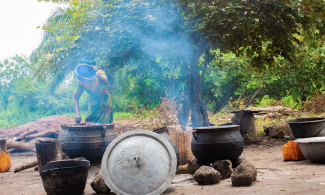
In 2019, the Danish government disbursed N1.6 billion to help women shea butter producers in Nigeria. But the project closed early and reached very few of the women it targeted. Elfredah Kevin-Alerechi and Nelly Kalu travelled to Oyo and Kwara State to investigate the impact of the project.
Adebimpe, a shea nut collector, is stooped over a huge cast iron pot that has turned black. She is cleaning these pots with her group of shea butter producers in preparation for another shea oil extraction cycle. They are in Nigeria's Ilua-Saki, Oyo State, at the Shea Butter Processing Center. The factory is a three-room bungalow with a spacious main room where the shea nuts, grinding, and milling equipment operate. The manager's office and a storage room for the shea butter are located behind this room. These women use firewood heat to manually knead and boil the shea paste to produce butter. It is a challenging process.
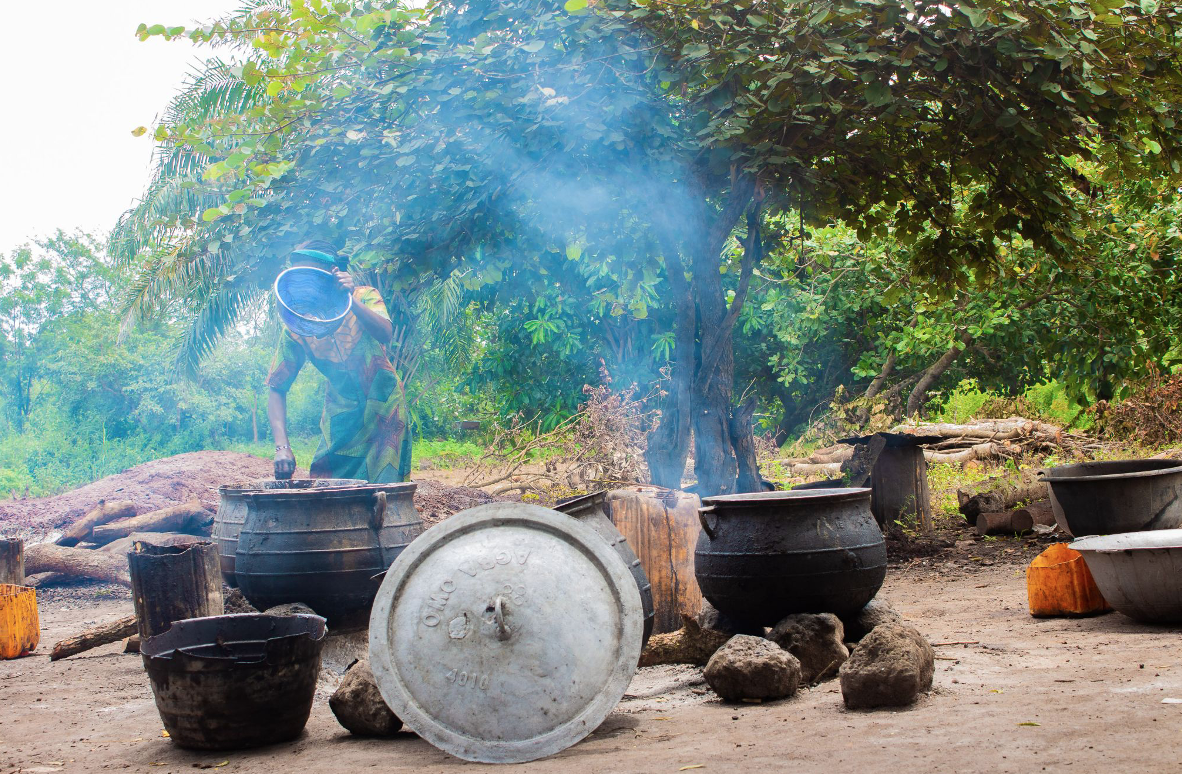
But in 2019, the Danish government designated $3.6 million as part of its Danida Market Development Partnerships (DMDP) to speed up the sustainable development of the shea value chain in Nigeria over a four-year period beginning in August 2020. It was led by the Kolo Nafaso programme, which was created by AAK (previously AarhusKarlshamn), a Swedish corporation with Danish roots that specialises in employing plant-based oils like premium shea butter for nutrition and personal care products.
Although the Danida project includes training of women shea collectors on the easiest ways to collect shea and produce shea products, several women in Saki, Tede and Atisbo where shea products are majorly produced in Oyo said they have never heard of any of the Danish projects. However, the problem lies in what this project promised to achieve. According to Danida, the goal was poverty alleviation through direct trade, interest-free micro-credit, guaranteed buying, and training.
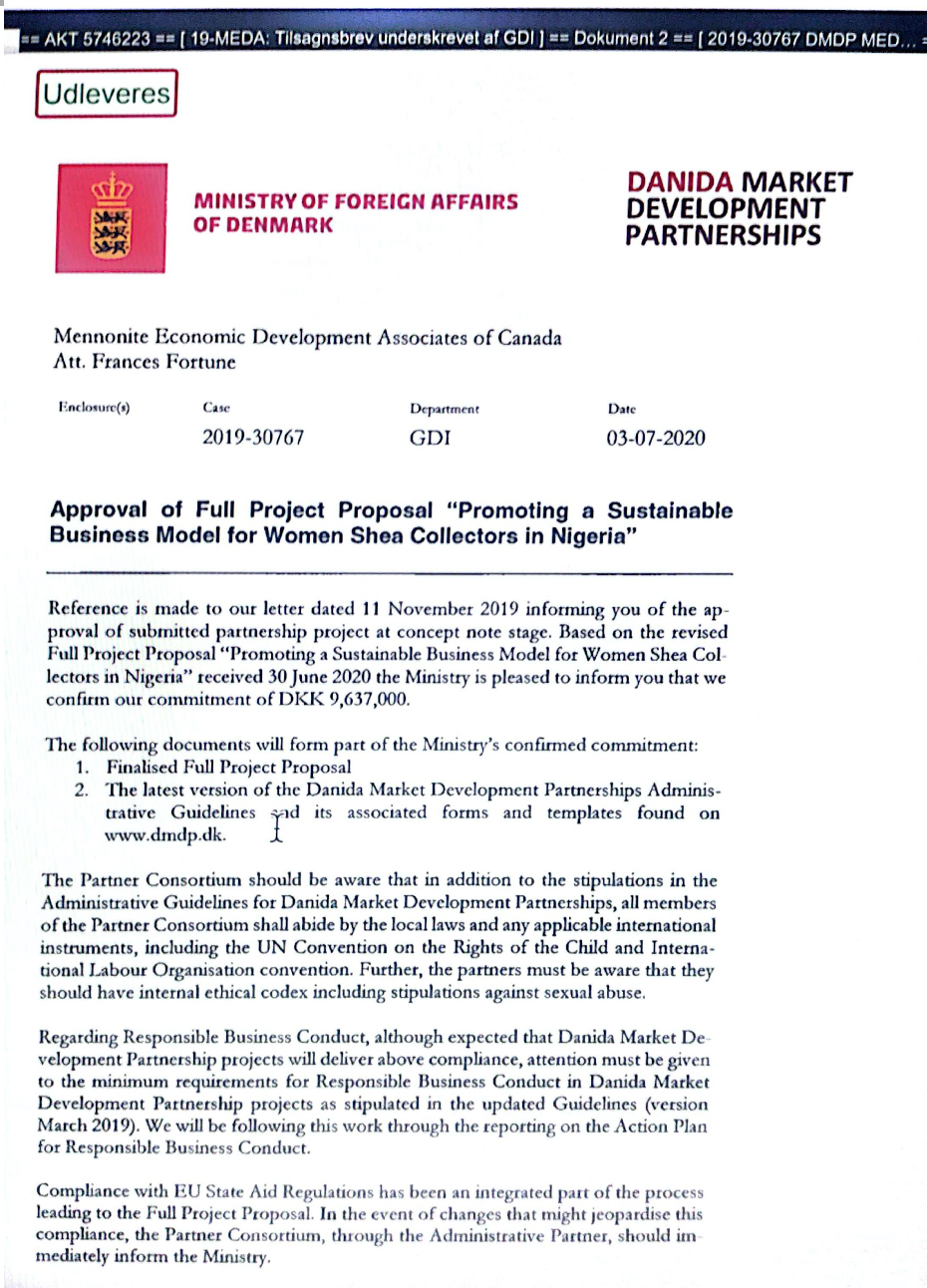
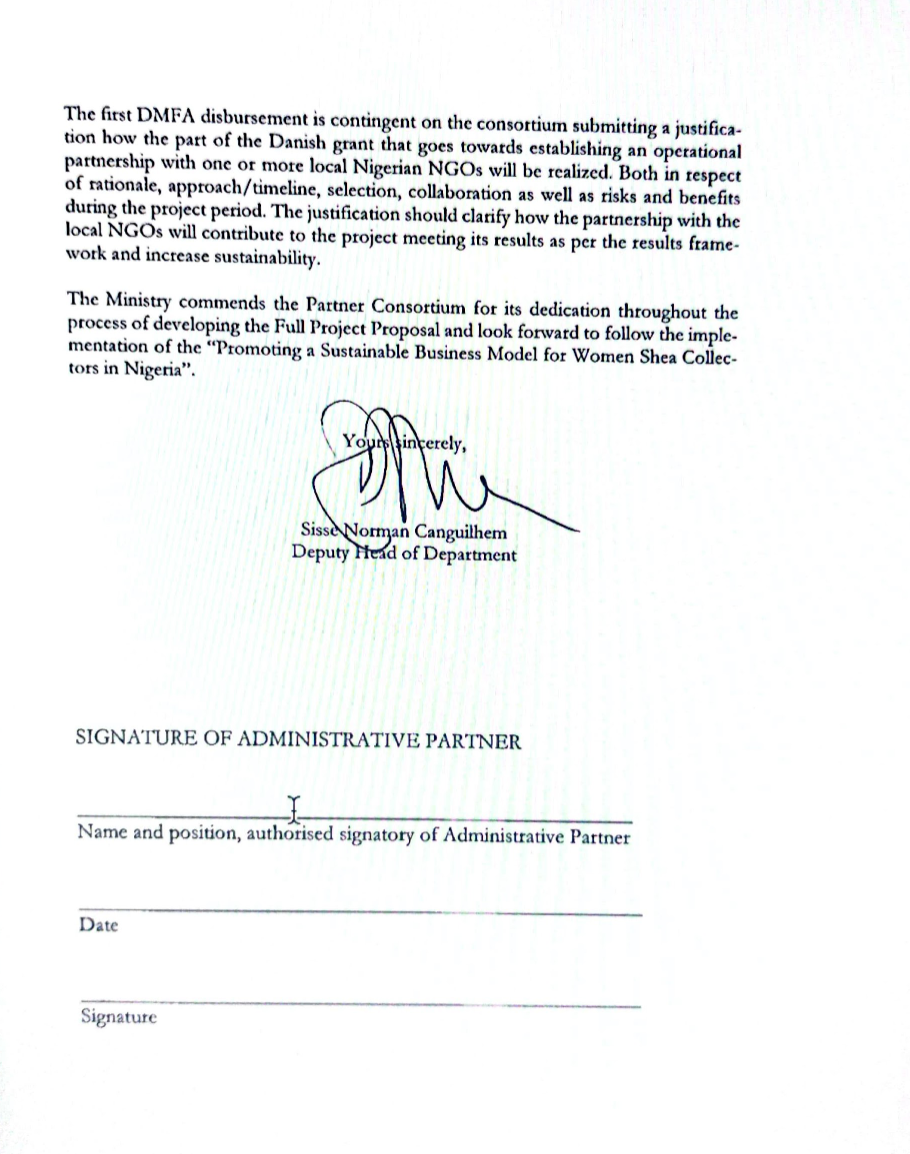
Findings, however, showed that many of the women in Saki and Tede are still living in poverty and working in hazardous conditions with little access to direct trade, and sometimes, they are exploited by middlemen. The traditional shea butter production process involves getting to the forest at 4:00.a.m. in the morning to use their bare hands to gather green shea fruits off the ground before the animals consume them. The fruits are de-pulped, parboiled, then sun-dried. The nuts are first dried, then rinsed again, sun-dried, ground into a pulp, kneaded, cooked over firewood heat, then manually churned into butter.
Women typically produce shea butter right in their backyards. The shea nuts are ground into a paste at the local mill, then deposited in an unfinished cement building. From there, the ladies shovel the paste into big cast-iron cauldrons and boil it over firewood stoves.
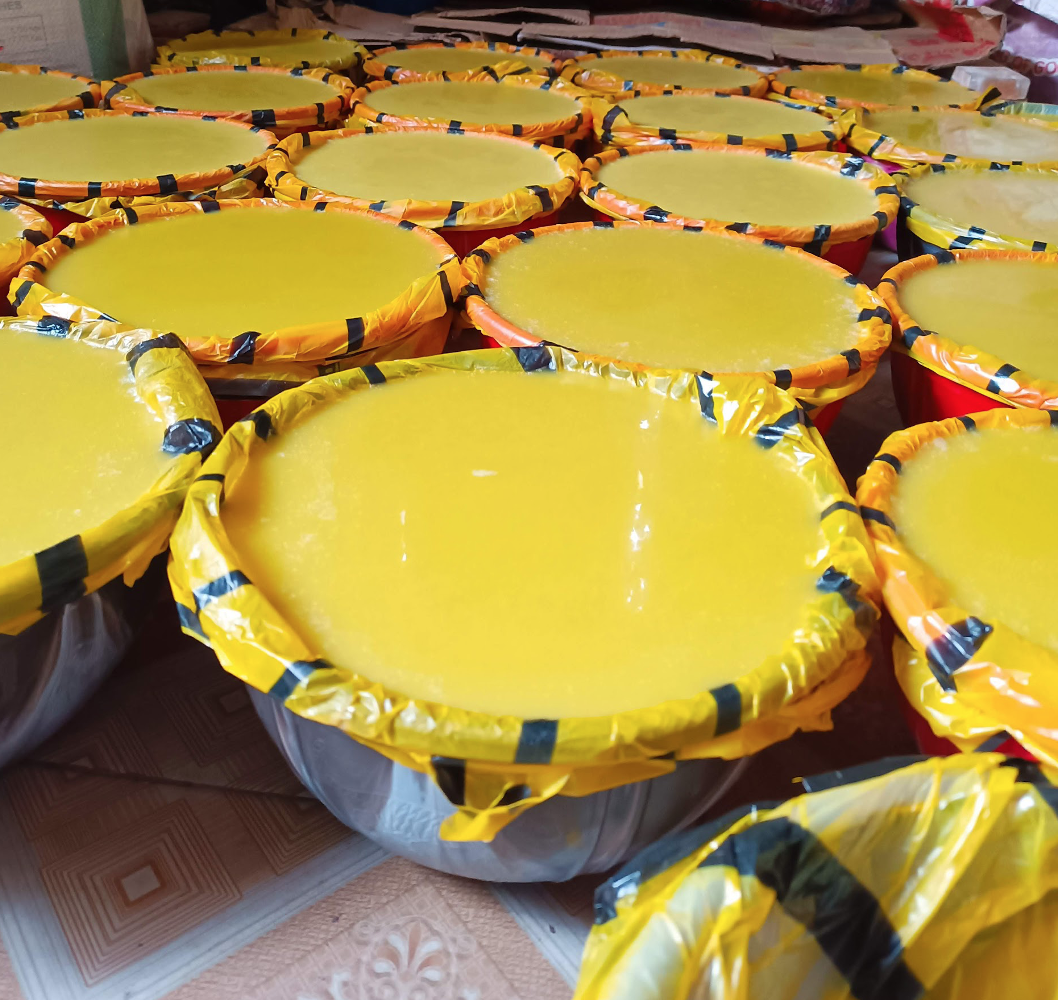
In the busiest season, between May and July, it requires two to three days and 8.5 to 10 kilograms (kg) of firewood to make 1 kg of butter. Without suitable means of transportation, women balance huge sacks of shea nuts on their heads, sometimes with their babies strapped to their backs. The shea producing process is water intensive, finding water and picking shea nuts takes hours-long journeys on eroding, rocky roads. Some women have bad health due to exposure to the inhalation of smoke, as well as bites from poisonous snakes and scorpions in the wild.
Some women have formed self-sponsored independent cooperatives, or collectives under organisations like the Initiative for Gender Empowerment and Creativity (IGEC), which, in collaboration with the Coca-Cola Foundation, established the Climate-Smart Shea Processing Facility in Tede, to protect themselves from exploitation. Through these cooperatives, the women in these communities collaborate with the local factory owners to set and manage price caps. The Shea Butter Processing Center in Ilua-Saki is one such autonomous partnership where the women process the butter and the factory owner promotes direct commerce with larger markets in Lagos, Ilorin, and Abuja. The plant manager, Abdullateef Abdulazeez, claims that he has never interacted with an AAK representative or heard about the Kolo Nafaso initiative from the female producers of shea butter.
Out of the 30,000 women who were targeted for the project, 5,430 shea collectors in total reportedly benefited, according to documents from the Danish Foreign Ministry. However, one might wonder who these beneficiaries are in Oyo State, given that the state's major shea collector and producer associations have yet to meet with any Danish project partners. Speaking on the record under the condition of anonymity, representatives from the Atisbo and Saki local governments could only direct this reporter to independent women shea producers and the Climate-Smart Factory and were not aware of any Kolo Nafaso projects in the region.
"They invited us for a meeting in Saki [local government office]. A man came here from Ghana and asked about our process, and he took samples, that's all,” Isha said. Although Alhaja Isha could not tell if this man was from any of the Danida partners, it is important to note that Global Shea Alliance is based in Ghana.
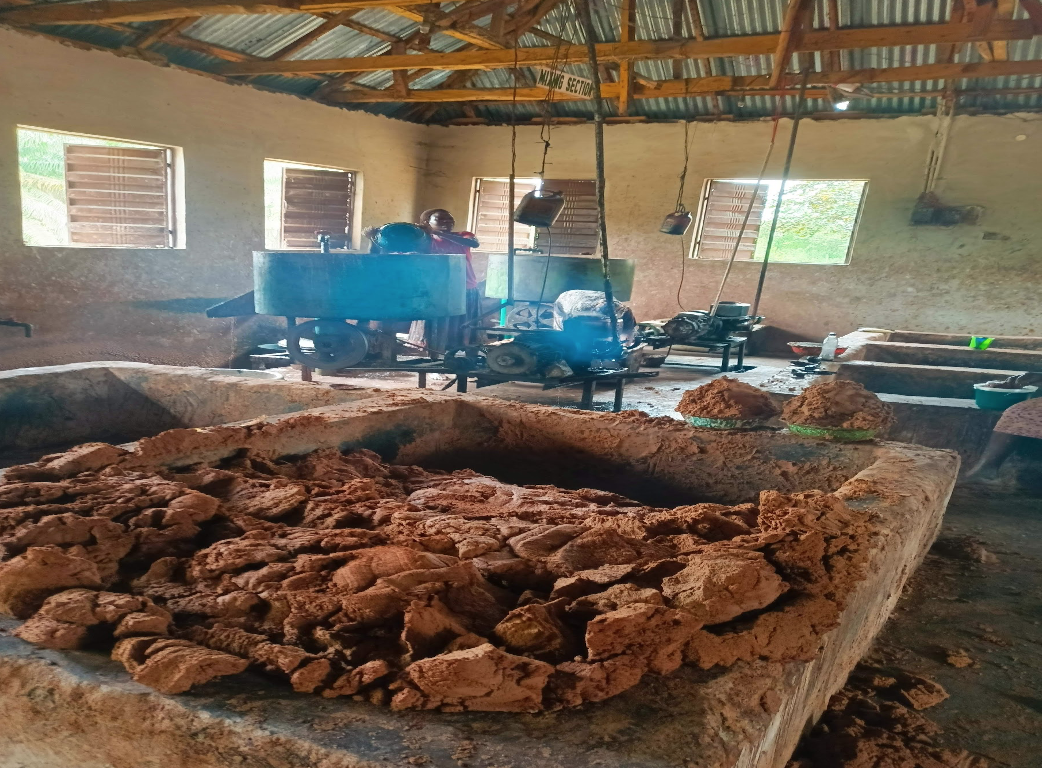
When asked about the quality of locally produced butter falling short of international standards, Isha insists it is of the highest quality; “In fact, a man comes from Ibadan to buy our shea butter and exports abroad, he says if anybody asks us to change our processing method we should not agree." The “man” she refers to is a middleman who buys shea butter from Alhaja’s group at a rate they agree on and resells them to local and international cosmetic producers. Commercial demand for shea butter is based on word-of-mouth reports from these middlemen who take advantage of the local women.
According to USAID, a semi-mechanized process can reduce extraction time and increase output by 30–40%, and a fully automated production rate can increase output by 42–50%. The Kolo Nafaso project aimed to enhance shea butter production conditions and offer an entrepreneurial network to shield producers from middlemen's exploitation.
Danida and partners response
“We were invited by AarhusKarlshamn (AAK) to join a DANIDA funded program in Nigeria to support women shea farmers. The request was for MEDA to provide training and resources to these women and promote access to a market for processed shea fruit with pulp and oil-producing nuts. MEDA would also be the qualified lead on the project. It was a requirement of DANIDA that a private sector partner participate and AAK filled this role,’’ says Dr. Pierre Diegane Kadet.
Dr. Kadet claims that AAK left the programme without giving any additional information, citing security issues. With the exception of news of the COVID-19 pandemic in Nigeria at the time, MEDA was unaware of any specific dangers to the project, and MEDA and DANIDA were unable to locate a substitute private sector partner and buyer, forcing them to terminate the project.
“We will continue to pursue these opportunities, however, we will encourage diversifying through multiple private partner participation, when possible. Hence, the program won’t be reliant on single vendors with a risk they may exit the program early.”
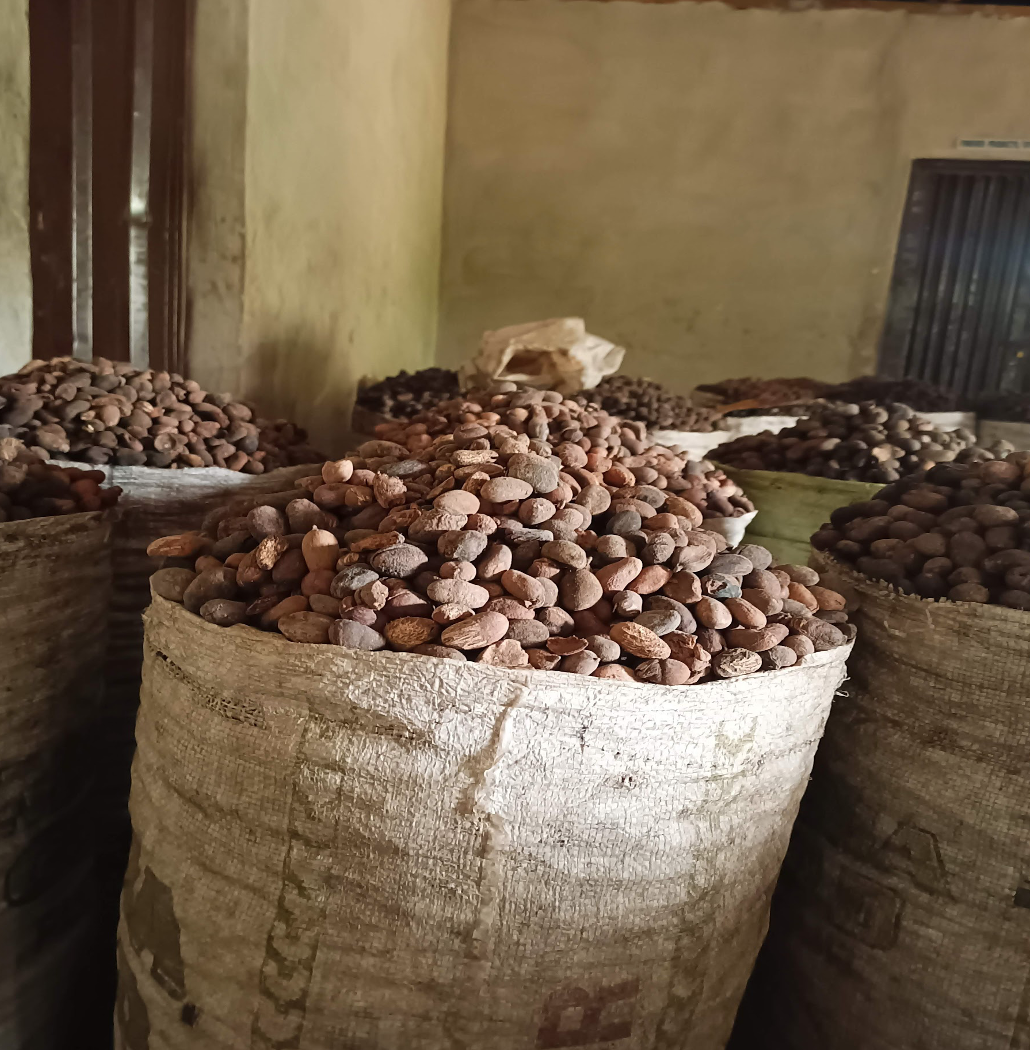
Commenting on the complaints of women shea butter in Oyo State despite the millions of naira released by the Danish government to support shea collectors in Oyo State, Guillaume Noirot, AAK Countries Manager for sourcing and trading in Togo, Benin and Nigeria said in an email: “after noticing a deteriorating security situation, we asked our external security and risk advisor to review the risk in the area. They concluded that there was increased tension among ethnic groups, which has led to conflicts including shooting and burning down of bush villages. Based on this they advised AAK to end our participation in the project, at least until the security situation is at a level where our employees can work in a safe environment.”
Carl Ahlgren, AKK communication officer in an email said the project started in August 2020 and ran until May 2021, "when AAK reluctantly sought to end its participation due to the region's deteriorating security situation”. According to Ahlgren, around 6,500 collectors were registered, of which AAK successfully purchased shea from around 550 women, exceeding 600MT in total.
Considering that the Kolo Nafaso project continues in Burkina Faso despite violent internal conflicts in the country, it begs a reason why the project could not continue in Oyo State despite the low record of insecurity in the state.
Same pain for Kwara women shea producers
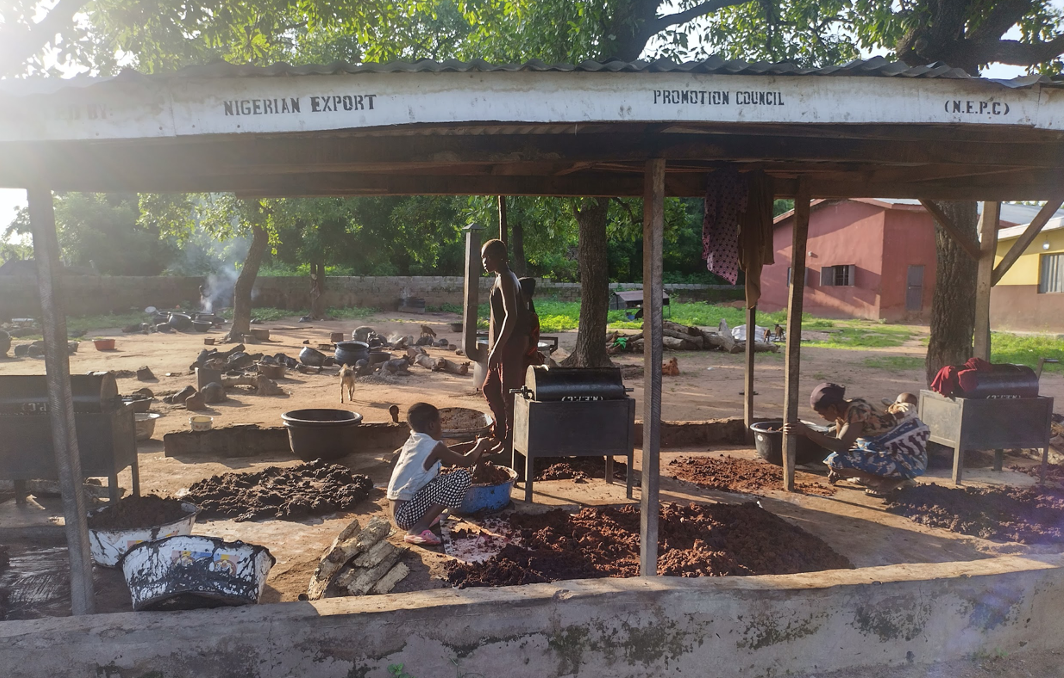
Umaru is the leader of shea butter producers in Burare, a village in Kaiama. For thirteen years, she has been gathering and preparing shea products. In Burare, more than 50 women work together to process the shea in an open area bordered by trees and a little zinc-covered shade to shield them from the sun.
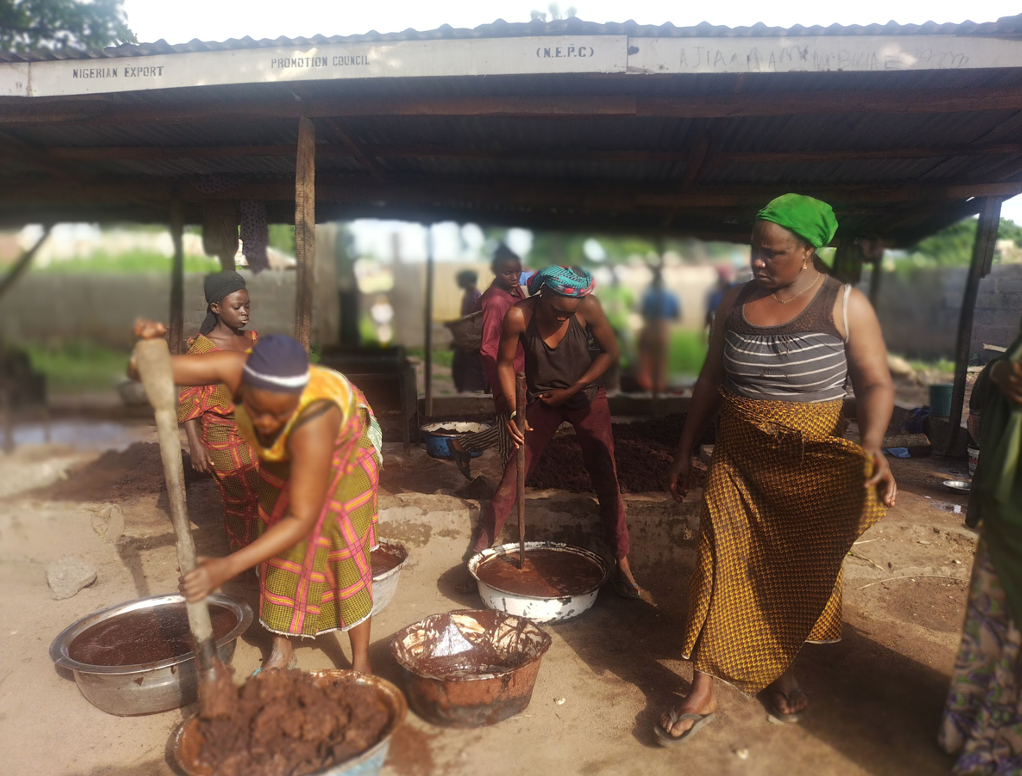
The process of picking shea to prepare for Western markets is notoriously time-consuming—takes a lot of hard work to get the nuts from the forest, according to some shea collectors in Kwara State. The Danish initiative focuses on creating and improving market linkages and incomes of rural women shea collectors in the country using local direct-sourcing cooperative models like the Kolo Nafaso model, to ensure an organised supply network of quality shea in Nigeria.
"They trained us how to use cool water to produce shea butter but that pattern is not working for us," she told the reporter inside their production camp in Burare.
These shea collectors in Kwara state, after picking the shea, will bring it to their production camp, mash them with a local machine, and use firewood to boil the kernel, which they claim is causing eye problems for them due to the constant inhaling of the smoke from the firewood.
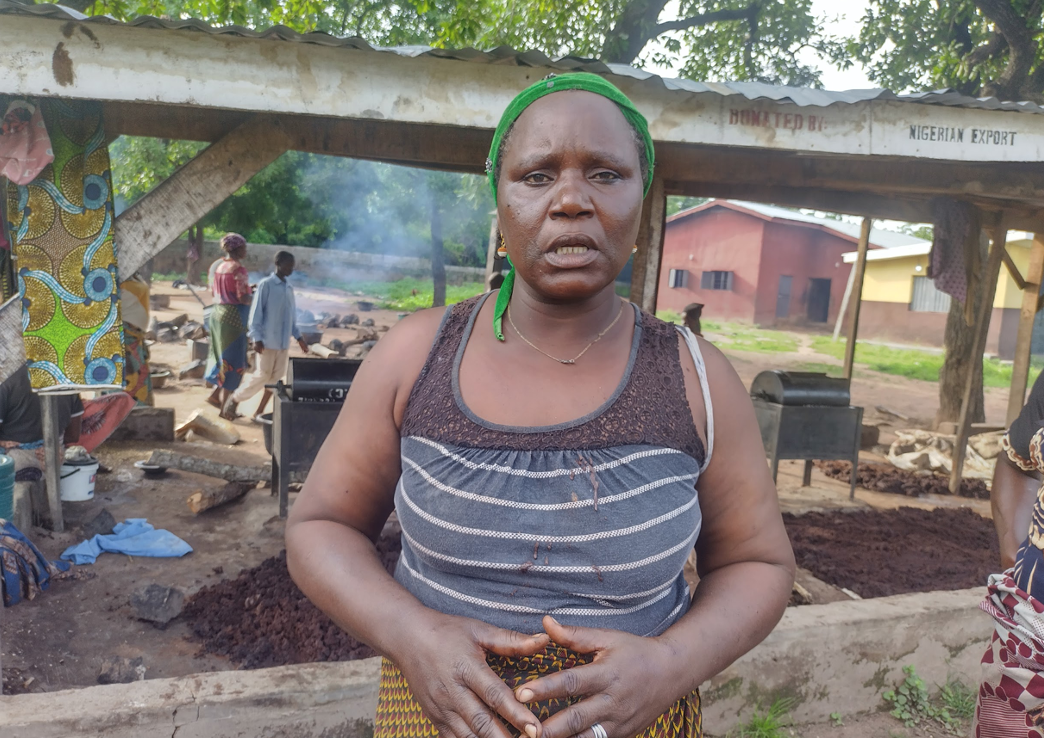
Sulama Haliyu Abraham, another shea collector in Burare, confirmed that she and other women in Burare have not received help from anyone nor have there been any training to enhance their skills.
The majority of our shea butter after processing is taken to the market in Ilorin, said Ms Abraham but "sometimes some company workers come to patronise us. The lack of advanced tools and training to facilitate the shea production is a challenge for the women shea collectors in Burare.”
Impact of using firewood
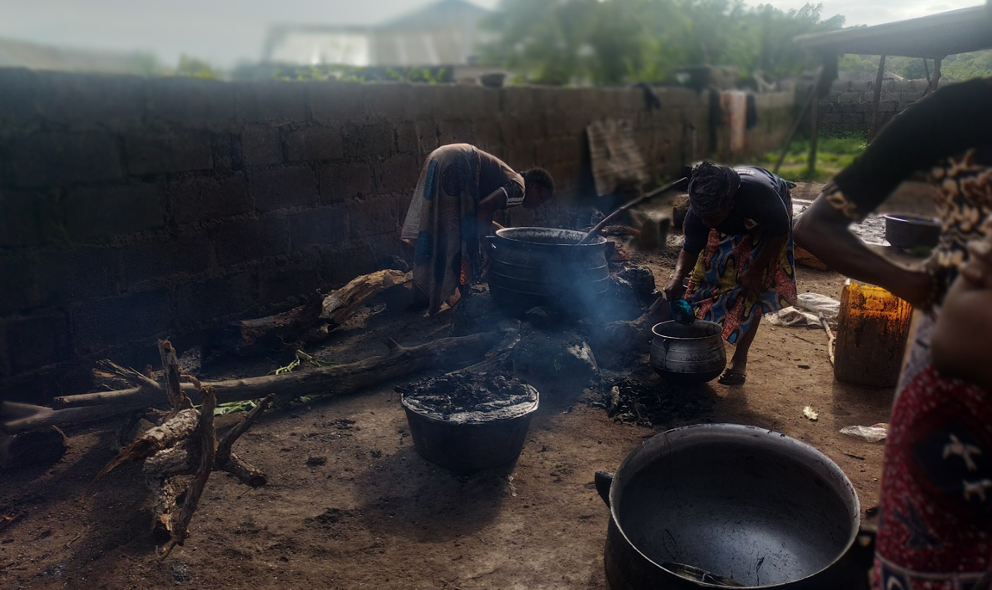
The World Health Organisation (WHO), in 2013 revealed that 93,300 deaths in Nigeria are caused by inhaling smoke from traditional biomass stoves, stating that smoke is the biggest killer of most women and children after malaria and HIV/AIDS.
Research carried out by Godson Ana and three others in Ibadan the capital city of Oyo State showed women in rural communities are exposed to emissions from firewood cooking stoves and are “more vulnerable to respiratory dysfunction even though in-depth longitudinal studies are required to establish causality.’
Several researches have shown that some deforestation results from gathering firewood for cooking, as 60 percent of Nigerians use firewood to cook, according to research focused in Ibadan by researchers, Olanrewaju, Tilakasir in Ilorin, the capital city of Kwara State.
The WHO Report claimed that all deaths of children under the age 5 are caused by lower respiratory infection due to inhaling particulate matter (soot) from household air pollution. The children in Oyo and Kwara living with parents and helping out to pick shea nuts and in the processing of the shea butter could also be at risk.
Similarly, in Burkina Faso, the Danish government within 8 years has injected 45.273 billion CFA francs into its national economic growth and poverty reduction by supporting several sectors, including shea. This aid was materialized by the company AAK, which is committed to guaranteeing a fair market for all organizations that have complied with production standards, a sort of guarantor of production quality.
"We should talk about mechanised units and export of shea butter. Alas, they say they support women, but business leaders like me do not interest them. They prefer to spend little and earn more with those who are not organised enough," She said.
Burkina Faso is the third largest producer of shea nuts in the world, after Mali (second) and Nigeria (first). Denmark is the main destination for shea kernels from Burkina, according to the country's trade balance in 2019 and 2020. The exported share represented 47.2% of national production in 2019 and increased in 2020 to 60%. In terms of volume, this sale brought in more than 15 billion CFA francs ($25M, €23M) in 2020.
Importance of Shea nuts and butter
Shea butter is increasingly in high demand, globally, with the top six producing counties in West Africa alone. However, promises of aid and injections of investments to provide better working conditions for West Africa’s shea producing women are yet to prove satisfactory.
The advantages of a well-managed shea ecosystem are endless. It offers long-term benefits for the environment and local communities. A successful shea value chain can establish environmental protection for shea trees, food security for local communities, and ensure good practices and protection for women from exploitative middlemen. Finally, it will improve the working conditions of the women ensuring their safety, health and welfare.
The global market demand for shea is valued at three billion dollars, with Europe as the major importer of shea, supplying the cosmetic, confectionary and pharmaceutical industries. But this comes at a cost for the predominantly women producers who work under terrible road networks, poor water supply systems, poor power supply systems, lack of modern processing equipment, and uncoordinated market systems.
A possible solution is to design adaptive technologies that combine indigenous knowledge with shea butter traditions and modern knowledge, which modernises the shea processing in Nigeria and preserves its cultural value to local women.
Additional reporting by Sandrine Sawadogo (for Burkina Faso) and Lasse Sorenson (Denmark).
This report is fully supported by Journalismfund.eu, and the idea was developed during the Civil Forum for Asset Recovery (CiFAR) programme.